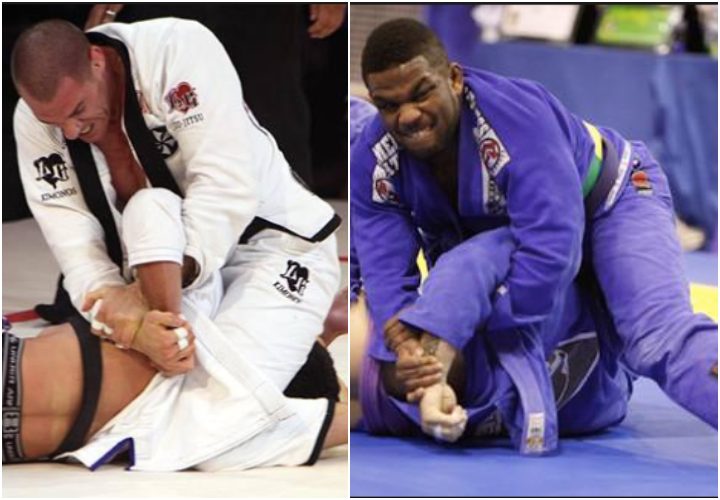Submissions are the lifeblood of Jiu-Jitsu. It is often said that you must “go for it” in order to land a submission. But the truth is, there is more to Jiu-Jitsu than just trying your luck.
Sure, you can try a variety of submissions in a match and see what sticks, but why not be more strategic about it? After all, if two different grapplers have the same set of skills, why should one have an advantage over the other?
In this article, we’ll cover proven strategies to help you make the most out of your submission attempts. From concepts like “flow drilling” to understanding which are the highest percentage submissions in Jiu-Jitsu; we’ve got you covered on all fronts. So let’s get started and explore these strategies for making your submissions count when it matters most!
Introduction to Jiu-Jitsu Submissions
Jiu-Jitsu is an art of submission, and learning the techniques to make submissions count is essential for success. Whether it’s self-defense or sport Jiu-Jitsu, understanding the subtleties and nuances of each submission will make all the difference.
Submissions can be divided into two broad categories: those that are high percentage and those that are lower percentage. High percentage submissions are those that require minimal set up and effort to successfully execute, while lower percentage submissions take more setup and timing to pull off. Knowing which submissions are most successful can help you get a better advantage when competing or practicing with a partner.
Here are some of the most effective high percentage submissions in Jiu-Jitsu:
- Armbars – Armbars are considered one of the highest percentage submissions in Jiu-Jitsu and can be used from multiple positions such as guard, mount, side control, etc.
- Kimuras – The Kimura lock is an extremely powerful submission and can be used from a variety of positions, including guard, half guard, mount, and side control.
- Chokes – Chokes such as guillotines, ezekiel chokes, etc., are simple to set up from any position on top or bottom but require proper technique to execute correctly and securely.
The Most Popular Submission Holds
Jiu-Jitsu is all about submissions, so which ones should you know? As a grappling martial art, Jiu-Jitsu has a lot of different holds that can be used to submit an opponent. These holds fall into three main categories: chokes, armlocks and leglocks.
Chokes
Chokeholds are often the most reliable and effective submission in Jiu-Jitsu. Some of the most common chokes include the rear naked choke (RNC), triangle choke and guillotine. These are simple yet effective submissions that can quickly force an opponent to tap out and can be employed at almost any time during a match.
Armlocks
Armlocks are another popular submission used in Jiu-Jitsu. Some of the best examples of armlocks include the americana, kimura and omoplata. All three of these submissions target weak points in an opponent’s arm, allowing for a swift submission if executed properly.
Leglocks
Leglocks are slightly more difficult to pull off than arm or choke holds due to the range and flexibility of legs compared to arms but they can be just as devastating if implemented successfully. Popular leglock submissions include the heel hook, knee bar and ankle lock.
Benefits of Practicing High Percentage Submissions
When it comes to learning Jiu-Jitsu, there are several benefits to practicing high percentage submissions. Here are just a few:
Success Rate
The success rate of a submission is much higher when it is a high percentage technique. This means that you will be more successful in actually finishing your submissions, as opposed to when you try something that is low percentage. High percentage submissions are the go-to moves for most Jiu Jitsu practitioners for this reason.
Efficiency
High percentage submissions are often much more efficient than low percentage ones, which require more setup and control in order to be successful. By learning and focusing on high percentage moves, you can spend less time energy on setups and more time with the actual submission.
Practical Application in Competition
High percentage moves are also much more practical in competition and sparring matches, since they require less time and setup than lower percentage ones. This means that high percentage submissions can give you an edge over your opponents in these situations – enabling you to finish the match faster or even win it outright with one move!
By learning and focusing on high percentage submissions, Jiu Jitsu practitioners can gain an edge over their opponents while also increasing their efficiency and success rate at finishing matches quickly.
Setting Up a Successful Submission Attempt
When it comes to making your jiu-jitsu submissions count, setup is key. After all, if you can’t set up the submission in the first place, you won’t be able to secure it! To set yourself up for successful submission attempts, there are a few key strategies you should keep in mind.
Take a step back
Sometimes when we get too close to our opponent, we can get tunnel vision and be unable to see an opportunity for a submission. Taking a step back gives us a better birds-eye view of the situation and helps us identify which submission might be possible given our positioning.
Control your opponent’s center of gravity
To make sure your submissions are successful, focus on controlling where your opponent’s center of gravity is. If they can stand up or escape your submission attempt with relative ease, then you haven’t controlled their center of gravity. Keeping them down and keeping them off-balance will increase the likelihood that they won’t be able to defend against your move.
Change angles strategically
Don’t just aim for one angle when trying for a submission—also consider where else you can go if one angle isn’t working out. Oftentimes there’s another angle that can be explored that will help secure the submission or at least increase the chances that it’ll work out in the end. It’s important to think outside of the box and not get stuck on one particular angle or plan of attack.
By taking these steps and keeping these tips in mind, you will set yourself up for success by giving yourself the best opportunity possible to make your jiu-jitsu submissions count!
Perfecting Your Technique for Maximum Efficiency
You can’t just execute a submission without perfecting your technique. Even the best submissions are useless if you don’t apply them correctly. And the truth is– mastering the right technique takes practice and dedication.
Top three submissions
When it comes to high-percentage Jiu-Jitsu submissions, the most popular ones are usually chokes, armlocks, and leglocks. All of these submissions have their own set of challenges that you must overcome to make them successful.
For chokes, it’s all about controlling your opponent’s neck and limiting their air supply. For armlocks, it’s about applying pressure to the limb until the opponent concedes or taps out. And for leglocks, it requires the commitment of both hands at once to constrict and gain control over your opponent’s leg joints.
Practice Makes Perfect
No matter which submission you are trying to perfect, practice is key! Learning Jiu-Jitsu comes from drilling techniques repeatedly until they become second nature. It might take some time but with dedication and effort, you will be able to learn how to transition between techniques quickly in live rolling sessions. This will help you gain more control over your opponent once they’re on their back and increase your chances of submitting them with one of these high-percentage techniques.
How to Make the Most of Your Submissions in Competition
When it comes to submissions, there are a few simple strategies that can make all the difference when competing in Jiu-Jitsu. The main goal is to make sure your submissions have a high success rate, and here’s how you can do just that.
Choose Your Positions Carefully
It’s important to choose the positions where you are most likely to get the submission. This means focusing on positions where you have the advantage of leverage and control – for instance, taking side control or north/south rather than going for a submission from guard.
Don’t Rush
Submissions can take time – don’t rush it. Make sure you’re fully committed to the submission before you attempt it, or else your opponent may be able to counter it successfully.
Use Momentum and Variation
In most cases, momentum is necessary in order to finish a submission, especially when dealing with more experienced opponents. The best way to create momentum is by varying your attack sequences – keep your opponent guessing and break down their defense step by step until they submit.
By following these strategies along with some consistent training and drilling of techniques, you’ll be able to increase your success rate when it comes to submitting your opponents in competition!
Conclusion
To conclude, when we think of submissions in Jiu-Jitsu, remember this: it is not a race, nor are there “best” techniques for all practitioners. The submissions that are most effective for you in a competition or training setting will depend on your experience, knowledge, and skill level–but what matters most is identifying and honing the techniques that work best for you.
Devote time to studying and practicing different submission strategies, understand their nuances and what makes them most effective, and make sure your training partners are aware of your intentions. As you do all of this, you will undoubtedly begin to build a powerful Jiu-Jitsu game with submissions that truly count.
Master Legendary Kimura Fundamentals with 2009 ADCC Bronze Medalist, Decorated Career Grappler, and Coach David Avellan
- Let Freestyle Fighting Academy Owner and 2004 ADCC Superfight Champion David Avellan give your submission toolbox a massive upgrade with this complete guide to enhancing your kimura
- A Black belt under Ricardo Teixeira, David Avellan has defeated some of the biggest names in BJJ and is well known for for his dangerous kimura traps.



















